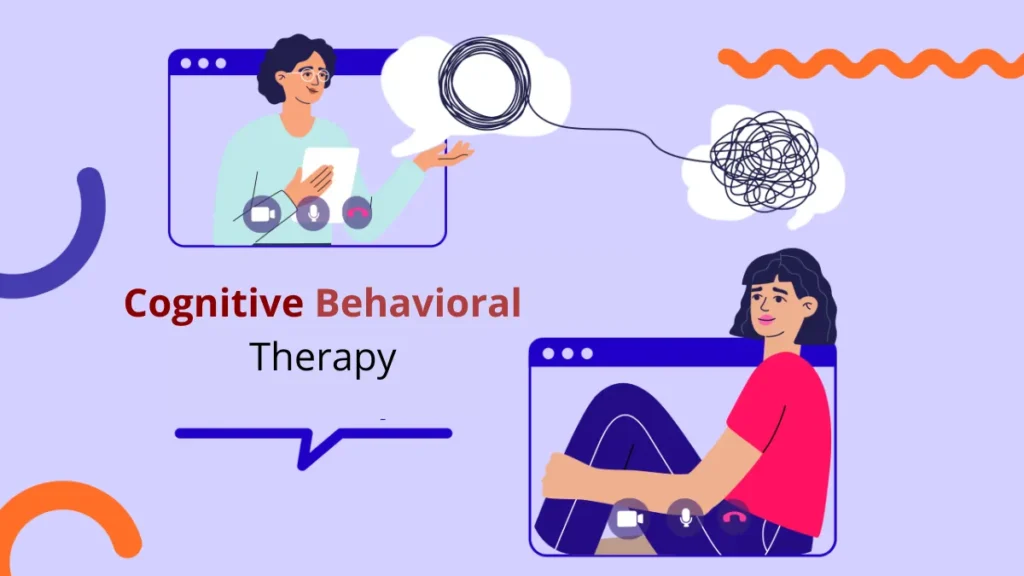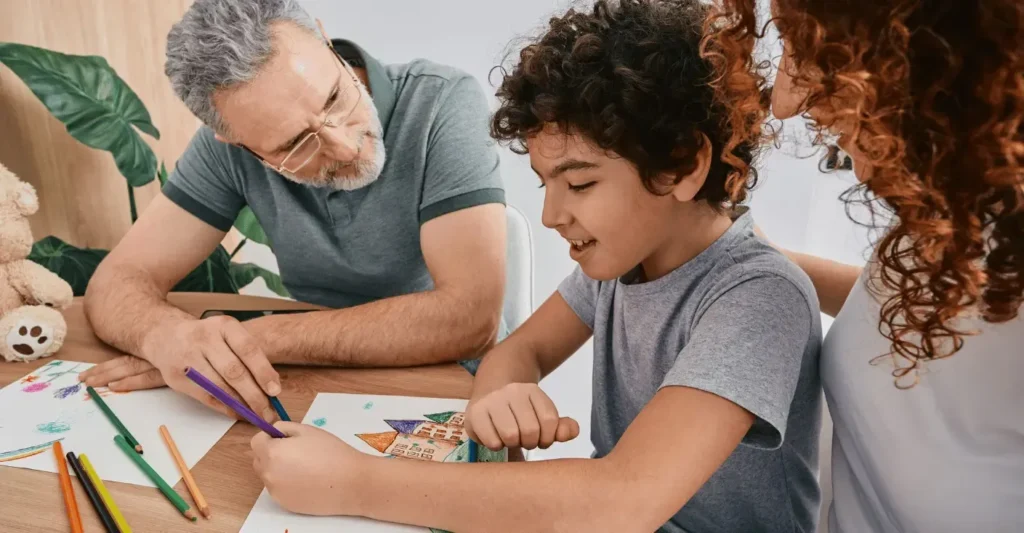Children Counseling face increasing emotional, behavioral, and social challenges. Whether it’s anxiety, trauma, anger, or low self-esteem, child counseling offers tools and space to help them heal and thrive.
Real Example: Sara, 8, refused to talk at school after her parents’ divorce. Through sand tray play therapy, she began expressing her emotions without needing words—and slowly opened up to her counselor.
Play Therapy
Children often don’t have the vocabulary to explain how they feel. Play becomes their voice. In this technique, therapists use dolls, blocks, storytelling, and drawing to observe and guide children.
Real Example: Liam, age 6, showed frequent aggression at home. In therapy, he always placed a “hero” toy between two fighting characters. This helped the counselor address his need for safety during his parents’ arguments.
Cognitive Behavioral Therapy (CBT)
CBT helps kids recognize negative thought patterns and replace them with healthier ones. It’s especially effective for anxiety, phobias, and behavioral outbursts.
Real Example: Emma, 10, was terrified of school after being bullied. Her therapist helped her create a “brave plan”—using thought-challenging worksheets and role-plays—to face her fear and rebuild confidence.

Trauma-Focused CBT (TF-CBT)
For kids who’ve experienced trauma (abuse, accidents, grief), TF-CBT blends cognitive strategies with trauma processing and emotional regulation.
Real Example: A foster child, 9, suffered flashbacks from past neglect. TF-CBT helped him name his emotions and safely talk through his story using a trauma narrative.
Expressive Arts Therapy
Using art, music, movement, or drama, children express emotions they may not fully understand. Ideal for those on the autism spectrum or with language delays.
Real Example: Olivia, 7, refused to talk after losing her grandmother. During art sessions, she painted butterflies repeatedly. Over time, she explained that the butterflies meant freedom and helped her say goodbye.

Parent–Child Interaction Therapy (PCIT)
This method strengthens relationships by coaching parents during play. It improves attachment, reduces defiance, and builds trust.
Real Example: A single mother and her 5-year-old were stuck in a cycle of yelling and ignoring. With live coaching through PCIT, the mom learned to respond with warmth and structure—dramatically improving their bond.
Mindfulness & Relaxation Therapy
Children learn to slow down, breathe, and calm their racing thoughts. Therapists use visualization, breathing exercises, and body scans to improve focus and emotional control.
Real Example: Jacob, 11, with ADHD, was taught “balloon breathing” before tests. Practicing this helped reduce meltdowns and improved his academic performance.
Animal-Assisted Therapy
Incorporating animals like therapy dogs or rabbits helps children feel safe and connected—particularly those with anxiety or trauma.
Real Example: A shy child with selective mutism began speaking to a therapy dog named Max before speaking to the therapist—breaking months of silence.
Solution-Focused Brief Therapy (SFBT)
Rather than focusing on problems, SFBT helps children set small goals and discover strengths. It’s fast, positive, and builds momentum.
Real Example: Ella, 9, said, “I want to stop crying every morning.” Her therapist helped her create a “strong morning routine,” focusing on what already worked—even brushing teeth with music became a win.
Sand Tray Therapy
Children Counseling means Children use figurines in a tray of sand to recreate real-life situations. This non-verbal tool is powerful for trauma, anxiety, and storytelling.
Real Example: An adopted child created a “hidden cave” scene where a bear hid from others. Through this, the therapist gently explored themes of mistrust and abandonment.
Family Therapy with Cultural Sensitivity
Family dynamics often fuel children’s struggles. Family therapy involves parents and siblings, focusing on communication, roles, and cultural understanding.
Real Example: In a family where showing emotion was taboo, a therapist used genograms and cultural stories to help a 12-year-old boy express anxiety without shame.
Quick Reference: Which Counseling Technique Fits Best?
| Challenge | Best Technique(s) |
|---|---|
| Anxiety / Panic | CBT, Mindfulness, Animal Therapy |
| Trauma / Abuse | TF‑CBT, Play Therapy, Sand Tray |
| Communication Issues | PCIT, Art Therapy, Family Therapy |
| Behavioral Outbursts | CBT, PCIT, SFBT |
| Grief or Loss | Art Therapy, Mindfulness, Narrative Therapy |
| Autism Spectrum | Expressive Therapy, Animal-Assisted Therapy |
Final Thoughts
Child counseling isn’t one-size-fits-all—but the right technique, guided by a trained therapist, can unlock healing, growth, and confidence in kids who are struggling. Whether it’s through play, art, or breathing with a therapy dog, emotional breakthroughs are possible—one session at a time.
Frequently Asked Questions (FAQs)
Q: How do I know which therapy is right for my child?
A licensed child therapist can assess your child’s behavior, emotional state, and communication style to recommend the best-fit technique.
Q: How long does child therapy usually take?
It varies—some methods like SFBT are short-term (6–12 sessions), while trauma-focused therapy may take longer.
Q: Can I be involved as a parent?
Yes! Parent-involved therapies like PCIT and family therapy are highly effective, and involvement often speeds up progress.
